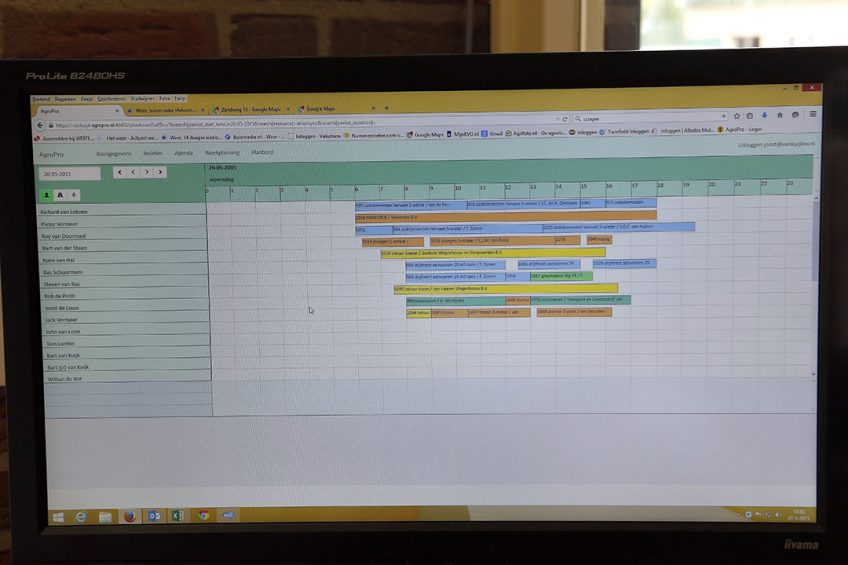Are we optimising labour enough on pig farms?

In every company, there is a clear division of tasks. Most people know exactly what their job is and how to do it. On pig farms, proper job management is more important than is often acknowledged. Why is it so important to think about this? And which questions matter? Welfare and housing expert Vivi Aarestrup Moustsen explains below.
There is no doubt that the factor ‘feed’ is important in pig production. Both for reasons of economy and production, because all pig producers focus on feeding of their pigs. They know the norms, or at least where to find them, and what nutrients, minerals, vitamins etcetera to feed the pigs in their different growth and reproduction stages. Both farms, industries and research environments focus on the impact of quality and quantity of feed ingredients on the production and health of the pigs. But how about the labour factor? Most pig producers will agree that labour is important to successful pig production. The question is, do we have as adequate a toolbox as we have for feed when it comes to labour?
Planning in a pig unit is important
In sports, nobody would create a soccer team line-up with only goalkeepers or strikers. Recently – before corona – I asked a group of students in Animal Science at the University of Copenhagen, how they made their way to their classes at the university. Did they come by bicycle, did they take the shortest distance or did they make a detour? The message to the students was that planning the work in a pig unit is equally important, because time or work hours are a limited resource, just like feed, and they needs to be considered as such.
One part of the students’ course included the analysis of a commercial pig herd and they had all asked for feed recipes – but showed limited focus on labour. What jobs or routines need to be done? When do they need to be done? How should they be done? Who should do them? How long would it take? Did caretakers have time and competences do the needed routines correctly and at the right time? And if not, did the farmer or manager have a plan or possibility to change worker, employ more people, ask the staff to help one another or do jobs differently?
Having a plan is always better for production
It is not necessarily an easy task to decide which job should be done or how it should be done, but it is without a doubt better for production to have a plan. There are pigs in the barns 24/7, but in most countries, caretakers are only there for a shorter period at daytime, they have weekends off (in turns) and they have holidays or might be ill. So who should do their jobs when they are not there? And does the colleague taking over the routine actually know how?
Large variation between herds
Looking at national or international figures for pig production efficiency, there is a large variation between herds. Looking at data for individual herds, it is also clear that most herds experience variations over time. Variation cannot be avoided, but it can be reduced and production results be improved if guidelines are followed – just as guidelines for feeding are followed.

Pig Progress experts talk
To read more Pig Progress expert opinions
Routines that need to be done in a farrowing unit
Which routines need to be done in a farrowing unit? Or how many minutes or seconds are available per sow or piglet for each procedure, when you know who is at work? And how many of their working hours can they spend in the farrowing unit?
Another calculation can be, if you know how many sows farrow on Mondays, how much time should be needed for surveillance and new born litters. Is that time available? And what happens if batch size differs between weeks? Is there extra manpower? What are the distances walked – which leads to valuable minutes of work hours spent walking, i.e. not looking after the pigs?
In addition, litter size increases gradually, which leads to an increase in number of piglets. They need looking after and different routines like nurse sows, supplementary milk or extra care of lower birth weight piglets. The numbers of employees or caretakers however changes in steps. That is one more challenge to take into account in planning the use of the workforce.
Labour and feed are equally important in pig farms
The point is that labour and feed are equally important factors to consider in all commercial pig herds. It is an issue that is not going away by closing your eyes, but it is a great opportunity to improve the production and the robustness of this production if guidelines are available, known and used by all employees.
The Danish Pig Research Centre offers examples, guidelines and toolboxes for e.g. good antibiotic use, the farrowing unit or management of production of growers.











